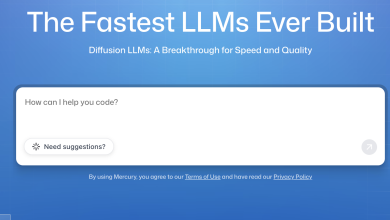
Ever wondered how you can adopt new technologies such as conversational AI? Many of you in the technology sphere will be familiar with Gartner’s hype cycle. A wonderful graph that visualises the journey that new technologies take where expectations of their capabilities increase rapidly once they hit the market followed by a steep fall into the “trough of disillusionment”. After that a steady growth in expectations known as the slope of enlightenment.
AI and conversational AI are no different. AI has received more excitement and conjecture than almost any other technology. Perhaps this is because we see the potential of AI and how it could change almost every element of our world for the better.
Unfortunately, this rhetoric provided too good an opportunity for technology providers and the term has started to be used everywhere. In the words of James Vincent, The Verge – the state of AI “AI is everywhere in tech right now, said to be powering everything from your TV to your toothbrush, but never have the words themselves meant less.”
The overuse and misguided adoption of the term AI means we have lost our sense of reality and clarity of what AI is and what it can do.
AI…is hard
Few companies have successfully scaled AI and their digital workforce, 3% in fact.
Why so few?
Because AI implementation is tougher than many tech firms are letting on. AI isn’t a simple out-of-the-box proposition. You can’t expect to just adopt AI and see instant, scalable results. That’s not how AI works and be cautious of any company that tells you otherwise.
A more honest view
Research by Chinese Academy of Sciences back in November 2017 found that the most advanced AI deemed to be Google’s has an IQ of 47.28.
That’s lower than the IQ of a six year old.
That’s the level we should treat AI but with the awareness that AI’s IQ and potential will continue to grow and those that have a firm understanding of AI and how to utilise it will be in prime position to benefit from the increasing value AI will offer.
Still, at its current level, AI can do amazing things.
The biggest message I believe the industry needs to give is a grounded one. That AI requires work and effort to be successful. The beauty of AI is that it delivers an experience that seems seamless and personable. The complexity lies underneath where the technology requires training and configuration.
AI’s barriers for adoption of conversational AI
In 2017 a study by Deloitte highlighted the following obstacles for AI adoption:

The higher the barriers the less likely organisations are willing to start out on their AI journey. One option is to lower these barriers.
The value of conversational or cognitive AI lies in its ability to personalise experiences. Conversational AI such as IPsoft’s Amelia or IBM’s Watson are tools that can be applied across almost any customer or employee-facing service desk interaction.
Often we start our AI journeys thinking of these technologies as tools capable of everything. We become kids in candy stores. We can apply this technology everywhere so where to start?
My advice, start small with a pre-defined proposition rather than a tailored brand-new proposition. Think of it as bite-size AI. Start with a well understood, proven offering that has already been developed outside your organisation and has a proven ROI. This way the barriers fall. You are not starting from scratch, but from a much more advanced position.
How does this cause the barriers to fall?
Cognitive AI requires configuration in order to personalise the experiences. You need to feed cognitive AI information. It needs to understand the language you and your customers use, the processes map your customers and employees follow and it needs to connect with other systems via APIs in order to fulfill a job end-to-end.
Proven offerings come pre-configured. You’re no longer developing a proposition from scratch where language, process, and connections need to be developed from point zero.
Instead, you start with a pre-configured proposition.
Imagine a bank wanting to automate a customer request for a new mortgage application or an HR service desk automating the onboarding of a new employee. These processes are not widely dissimilar from bank to bank or from one organisation’s HR function to the next. These similarities can be configured, sometimes up to 80% pre-configured. What’s left to do is configure the last 20% to your Bank or HR function’s internal language, internal process maps, and internal systems (you may have pre-configured APIs for Workday or Oracle Peoplesoft for example).
Just the beginning
With this approach not only are you starting to develop a proposition for your business with a head start, but you are also lowering the level of risk.
Costs are typically reduced as delivery costs less and the proposition benefits from economies of scale. Risk is reduced firstly as the cost is lowered and secondly because the delivery of the proposition is more proven (it’s been done before!).
One side of the partnership has experience in implementing the proposition already and therefore can give clearer advice and direction as to what’s needed your side in order to implement AI successfully. They can work with you more closely and steer you through the process.
The drawback to this approach is that you are dependent on the relevancy and value of the pre-configured propositions on offer.
But, if you can see the value then this is a great place to start and lower the barriers of AI adoption. With it, your understanding and ability to utilise AI technologies elsewhere within the business grow. If all goes well then the AI stabiliser wheels will soon be off and you will soon be in a position to go forth and develop cognitive AI in other areas of your business with much lower barriers.
How are you adopting conversational AI?
If you’re using conversational AI, I want to know how you’re adopting and implementing the technology. If not, I want to know if you and your business are planning on using the technology any time soon or not and why.
You can let me know by leaving a comment or reaching out to me on LinkedIn.


